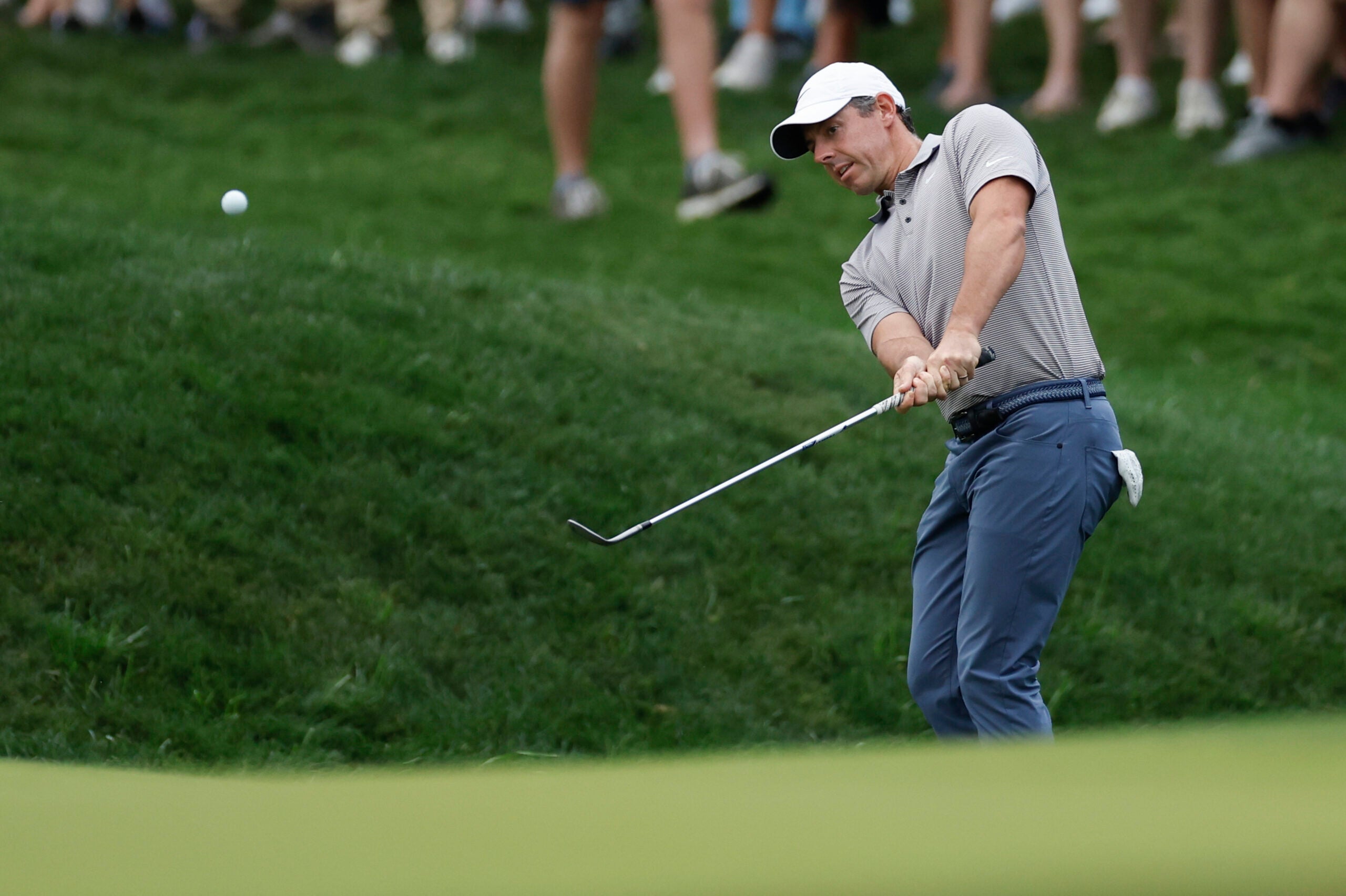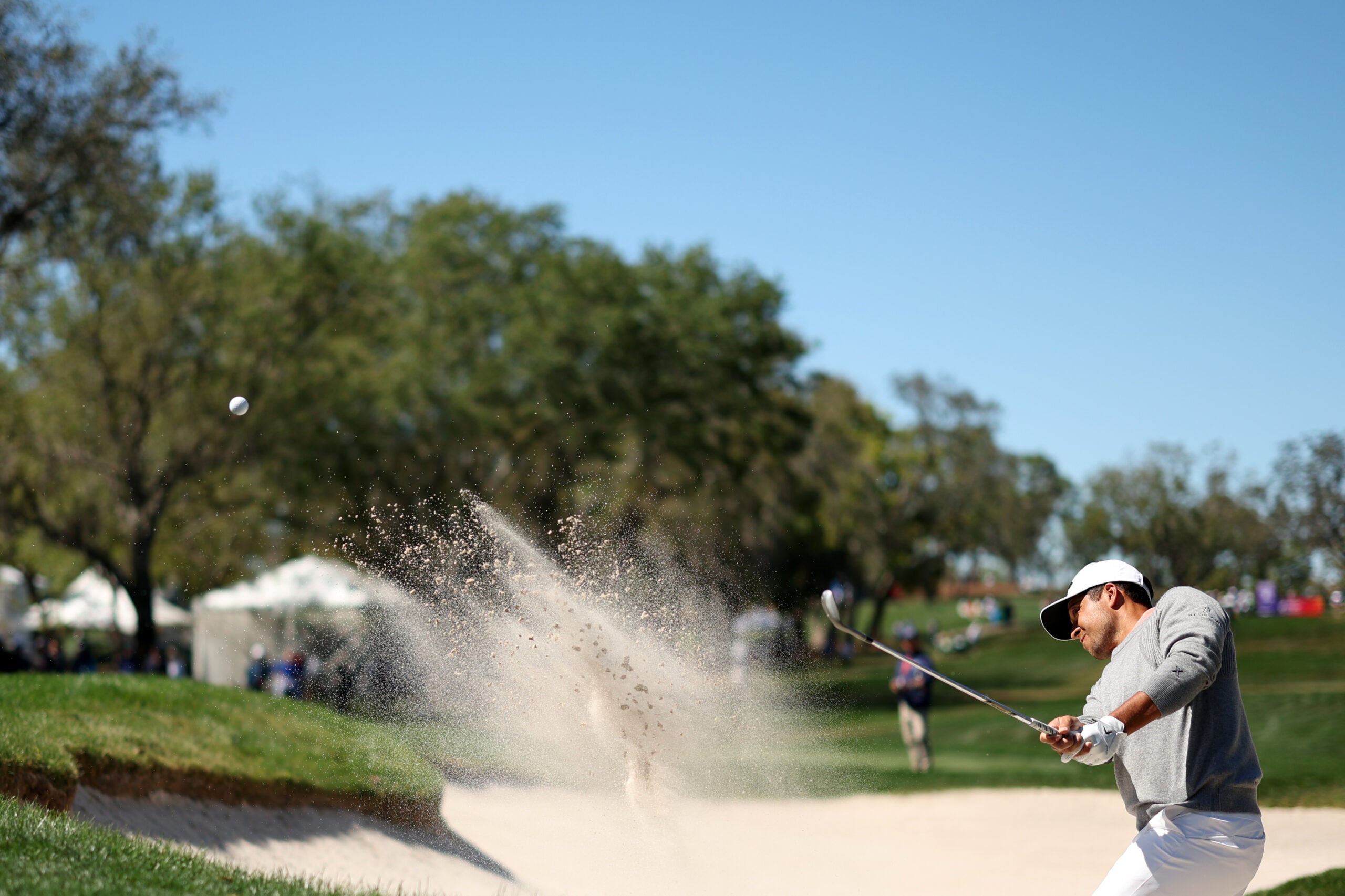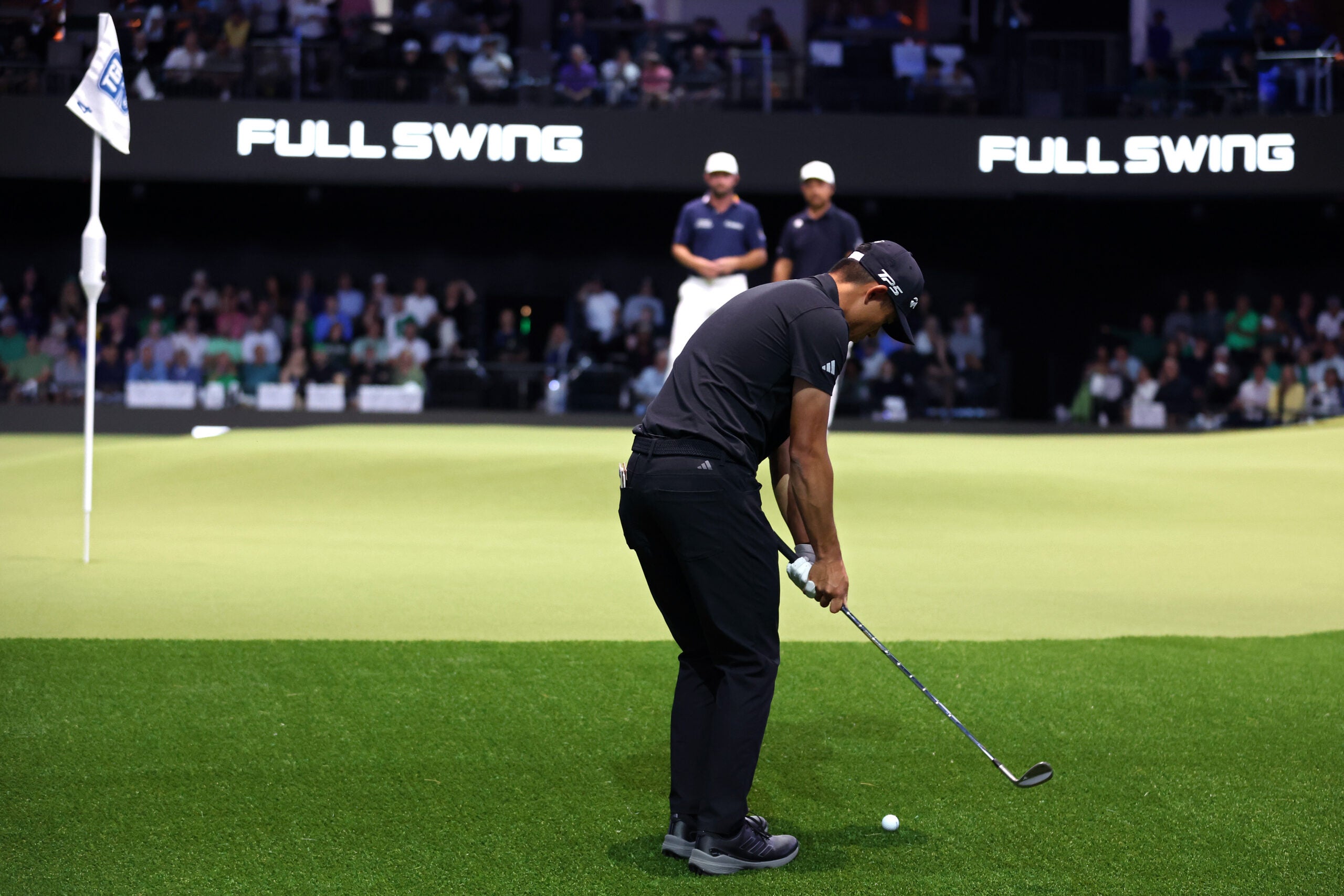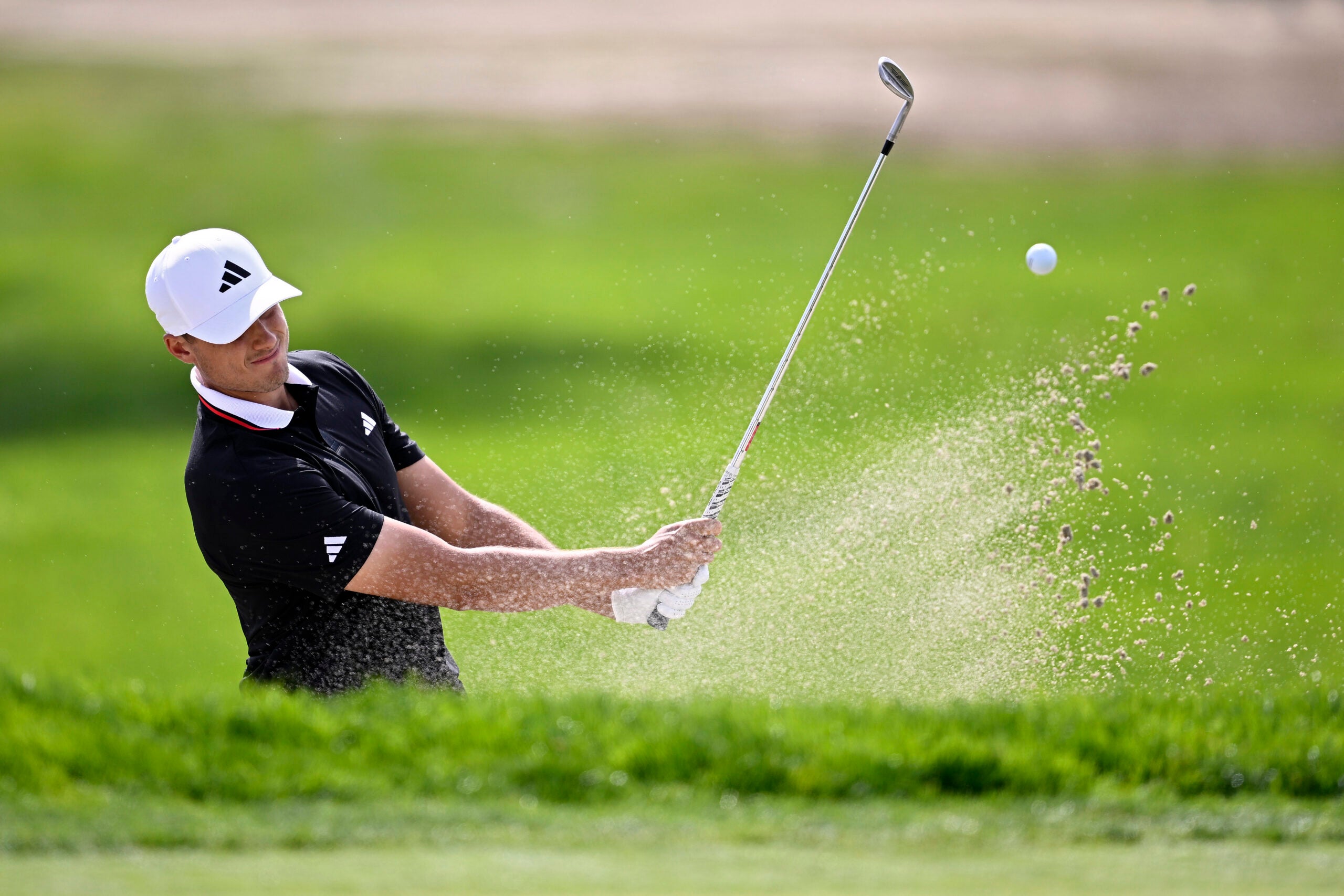With the driver getting most of the attention these days (for really fun reasons) the section of the bag that requires the most thought (in my opinion) is the what and why of players’ wedge setup. I get this question a ton in my Friday AMA’s on Instagram.
What’s the most common wedge setup on Tour? To be honest it’s all over the map with the one constant being most Tour players go with a four-wedge bag (PW/GW/SW/LW). Back in the day it was PW/SW/LW, but that was mainly pre-ProV1 and before the distance revolution began.
So, what happened?
It started with the launch of the modern ball in October 2000, which is when the whole golf world spun on its head. With the introduction of the new high launch/lower spin platforms not only was the ball going farther but even higher.
At the Tour level higher is awesome for maybe 3- through 5-iron, but that’s where its stops. The response to this, although subtle, was a strengthening of lofts across the iron sets. As the ball evolves, so does the golf club — it has to from an aerodynamics standpoint. So in an effort to maintain control with the combo of spin and launch, the lofts had to come down and the center of gravity needed to be readdressed to make it all jive.
An old loft package for irons and wedges on Tour (pre-2005-ish) might have looked like this:
3-21
4-24
5-28
6-32
7-36
8-40
9-44
PW-48
SW-56
LW-60
While a 2025 set looks like this:
3-20
4-23
5-26
6-29
7-33
8-37
9-41
PW-45/46/47
GW-50/51/52
SW-54/55/56
LW-58/59/60/61/62/64
As you can see, a modern Tour set is roughly 2-3 degrees stronger. Off the top of my head, the only players who play with lofts that live in the old-school ballpark are Tiger, Rocco Mediate, the Hojgaards, Xander and Rahm, with Tiger and Rocco being the only two who live almost apples to apples. The other three are what I would call serious shaft leaners, meaning their impact conditions require a ton of loft to keep the ball in the air and in hand.
This modern loft package asked less of the top of the iron set and asked more of the bottom. That’s when the four-wedge system came into popularity and now it’s the norm. The top five players in the world have wedge makeups that all check off the four-wedge system — and if you look closely you’ll see some similarities.
Wedge gapping typically falls in a 12- or 15-yard realm although is player and bag dependent. (For example, Phil is a 15-yard gap guy and Rahm is a 12 guy.)
Check out below for the wedge setups of the top-five players in the world. (*PW not included, but they all obviously use them.)
Scrambling Rank: 3rd

Titleist Vokey Design SM8 (50/12F, 56/14F)
Titleist Vokey Design WedgeWorks SM9 Proto (60T)
Shafts: Dynamic Gold Tour Issue S400
$189.99
View Product
ALSO AVAILABLE AT: PGA Tour Superstore, TGW
Scrambling Rank: 8th

TaylorMade MG4 (50/09SB, 54/11SB, 60/08LB@61)
Shafts: Project X 6.5 (50-54), Project X 6.5 Wedge (60)
$179.99
View Product
ALSO AVAILABLE AT: PGA Tour Superstore, TaylorMade
Scrambling Rank: 1st in 2024

Callaway Opus (52/10S@53)
Titleist Vokey Design SM10 (56/10S@57, 60/04T@61)
Shafts: True Temper Dynamic Gold Tour Issue X100
$179.99
 , three elements of spin come together to provide short game action and control like never before. We’ve spent hours poring over every detail of shape and design with the very best players in the world, so you can have a wedge that sits confidently behind the ball, poised to hit any shot your game may require.
Spin Gen Face Technology
, three elements of spin come together to provide short game action and control like never before. We’ve spent hours poring over every detail of shape and design with the very best players in the world, so you can have a wedge that sits confidently behind the ball, poised to hit any shot your game may require.
Spin Gen Face Technology for Tour Level Spin
Spin Gen Face Technology provides spin and control in your wedges by combining 3 key elements on the face; an all-new tighter pitch which puts more grooves on the face, offset groove-in-groove for spin when opening the face, and a new aggressive face blast providing spin and bite on partial shots. These three elements work in conjunction to provide a crisp, tour level spin.
Tour Certified Shaping
Opus wedges are the most Tour-tested, Tour-validated shapes in Callaway history. A higher toe peak, radius in the leading edge, and easier hosel transitions make Opus our best wedge shape ever.
Grind Options to Fit Your Game
Your technique travels with you, so finding the right grind for your swing is paramount in wedge play. With Opus, we have a complete lineup of sole shapes from narrow to wide, available in our popular S grind, forgiving W, versatile C, and Tour-favorite T grind.
for Tour Level Spin
Spin Gen Face Technology provides spin and control in your wedges by combining 3 key elements on the face; an all-new tighter pitch which puts more grooves on the face, offset groove-in-groove for spin when opening the face, and a new aggressive face blast providing spin and bite on partial shots. These three elements work in conjunction to provide a crisp, tour level spin.
Tour Certified Shaping
Opus wedges are the most Tour-tested, Tour-validated shapes in Callaway history. A higher toe peak, radius in the leading edge, and easier hosel transitions make Opus our best wedge shape ever.
Grind Options to Fit Your Game
Your technique travels with you, so finding the right grind for your swing is paramount in wedge play. With Opus, we have a complete lineup of sole shapes from narrow to wide, available in our popular S grind, forgiving W, versatile C, and Tour-favorite T grind. View Product
$225
View Product
ALSO AVAILABLE AT: PGA Tour Superstore, Callaway
Scrambling Rank: 16th

TaylorMade MG4 (50/09SB, 56/08LB, 60/11TW)
Shafts: True Temper Dynamic Gold Tour Issue S400
$179.99
View Product
ALSO AVAILABLE AT: PGA Tour Superstore, TaylorMade
Scrambling Rank: 124th (*Just imagine what he’d do if this stat was in the top 30!)

Titleist Vokey Design SM10 (50/08F, 54/10S, 60/08M)
Shafts: KBS Tour 130 X
$225
View Product
ALSO AVAILABLE AT: PGA Tour Superstore, TGW
Quite a bit, actually. There are a couple of things that can really standout in all of these setups:
1. They all have versatility: Each player has at least one low-bounce option and a high-bounce option. Most of the time the 60 will sit on the low side of bounce and the sand wedge will give them the higher bounce option. This is actually how Vokey fits for a set. If one is low, the other needs to be high. That gives you options and versatility on any surface.
2. Gapping is perfect: Tour players dial in wedges based on carry/spin, etc. However, the gapping has to satisfy off-speed shots and a very specific window as well. That’s where a fitting a good Trackman come into play. Yes, this is more for full shots but remember, wedges have like 10 jobs to do.
3. This is Priority No. 1: The four most important parts of your bag that need to be perfect, in order: 1) the ball 2) the wedges 3) the driver 4) the putter. Those are the most involved clubs in your bag.
Getting your wedges right can literally transform your game for the better. Any major drops in your handicap start there, so get that dialed and it take a ridiculous amount of pressure off everything else. Happy hunting.
Want to overhaul your bag for 2025? Find a club-fitting location near you at True Spec Golf.
The post The wedge setups of the top players in the world (and what you can learn) appeared first on Golf.